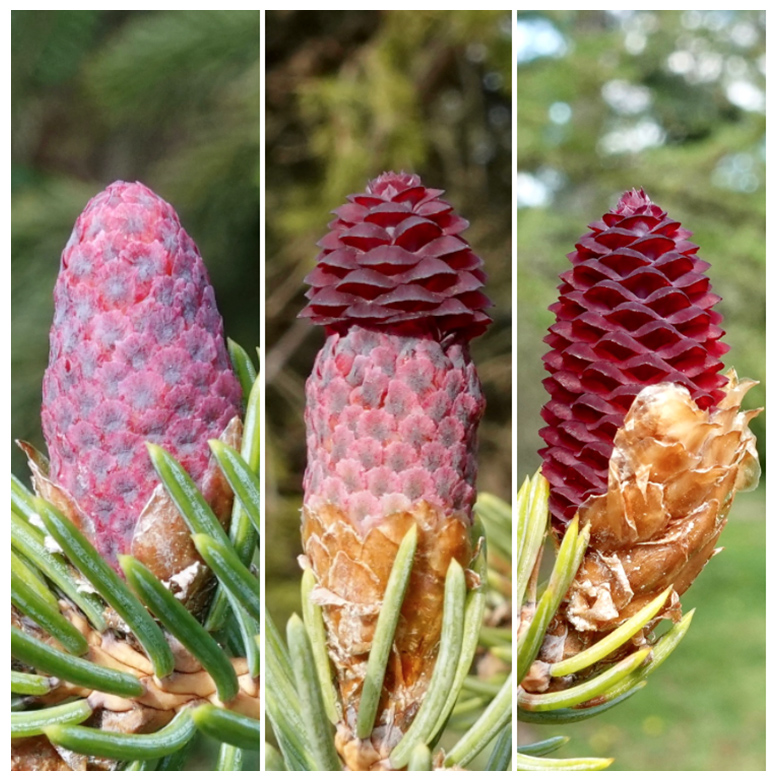Botany rule #17: All conifer cones, for the last 300 million years (give or take) are unisexual. Each cone either produces pollen (male function through sperm) or seeds (female function through eggs). For well over a century, plant morphologists (members of a rarified discipline that focuses on the principles of plant form and was inaugurated by none other than Johann Wolfgang von Goethe) have known of conifer tree weirdos that can produce strange looking bisexual or hermaphrodite cones in addition to normal pollen-producing cones and seed-producing cones. While no one knows why this happens, it is rare and definitely something to see when the opportunity arises.
This week, at the Arboretum, one of our Lijiang spruces, Picea likiangensis (243-92*C) has broken bud, revealing hundreds of hermaphrodite cones right at eye level—and easily found at the south end of Conifer Path near Walter Street Gate. Of course, the brilliant reds of young spruce cones are one of my favorite obsessions each spring at the Arnold. But, to top it off with this rare phenomenon is icing on the cake.

As you approach this young tree, you will see hundreds of bright red structures (cones) set against the greens of the needles. Take a moment to let your eyes relax and then focus on each cone. A very few are entirely normal pollen producing-cones (left image) or seed-producing cones (right image). But the vast majority are bisexual (central image), with pollen-producing structures at the base and seed-producing structures at the top. Interestingly, the ratio of male to female structures within a cone varies from mostly male to mostly female. And again, who knows why? Just enjoy.
And if you want to know how truly obsessed I am about young spruce cones, head over here to see a few more pictures.
